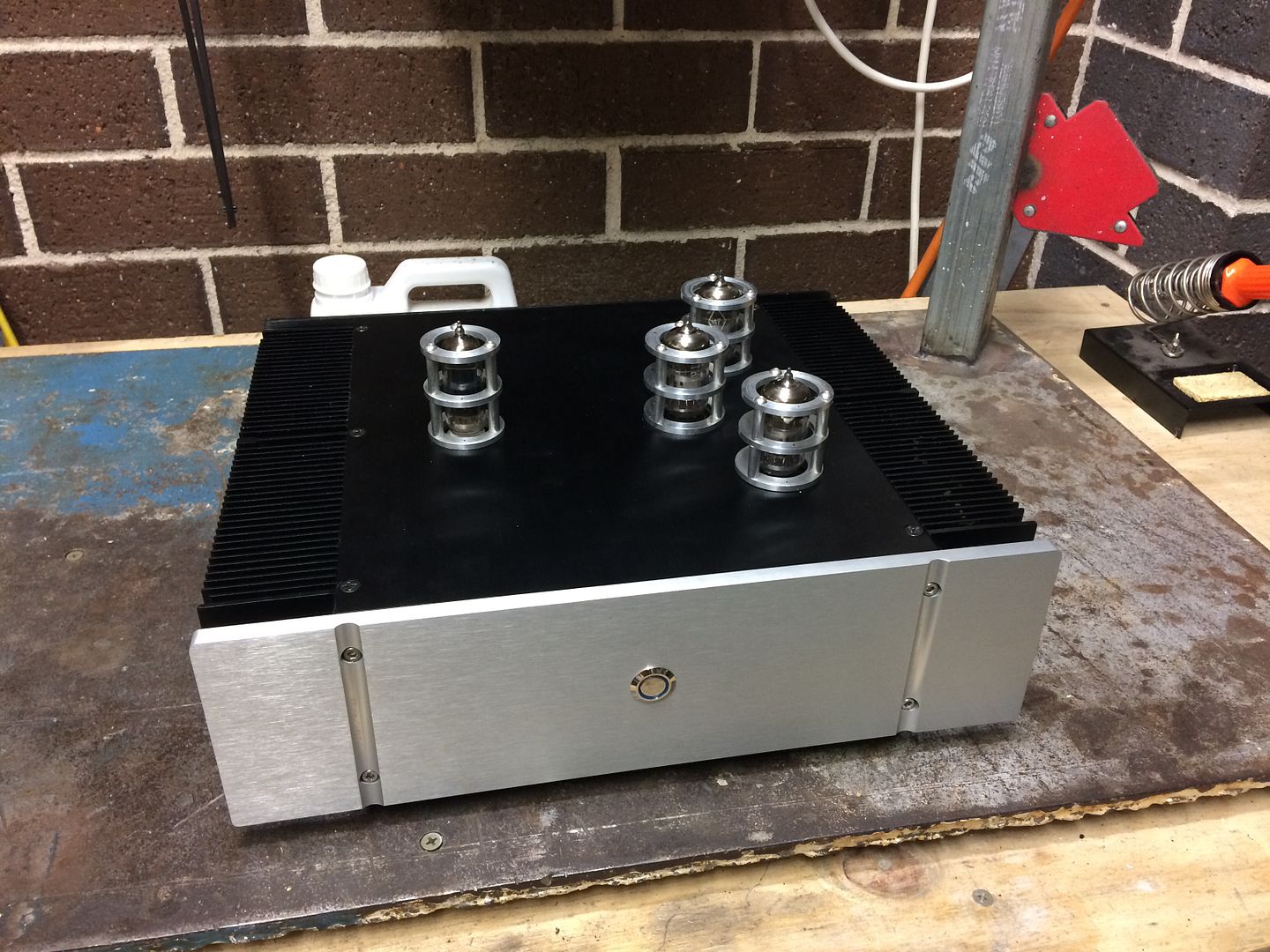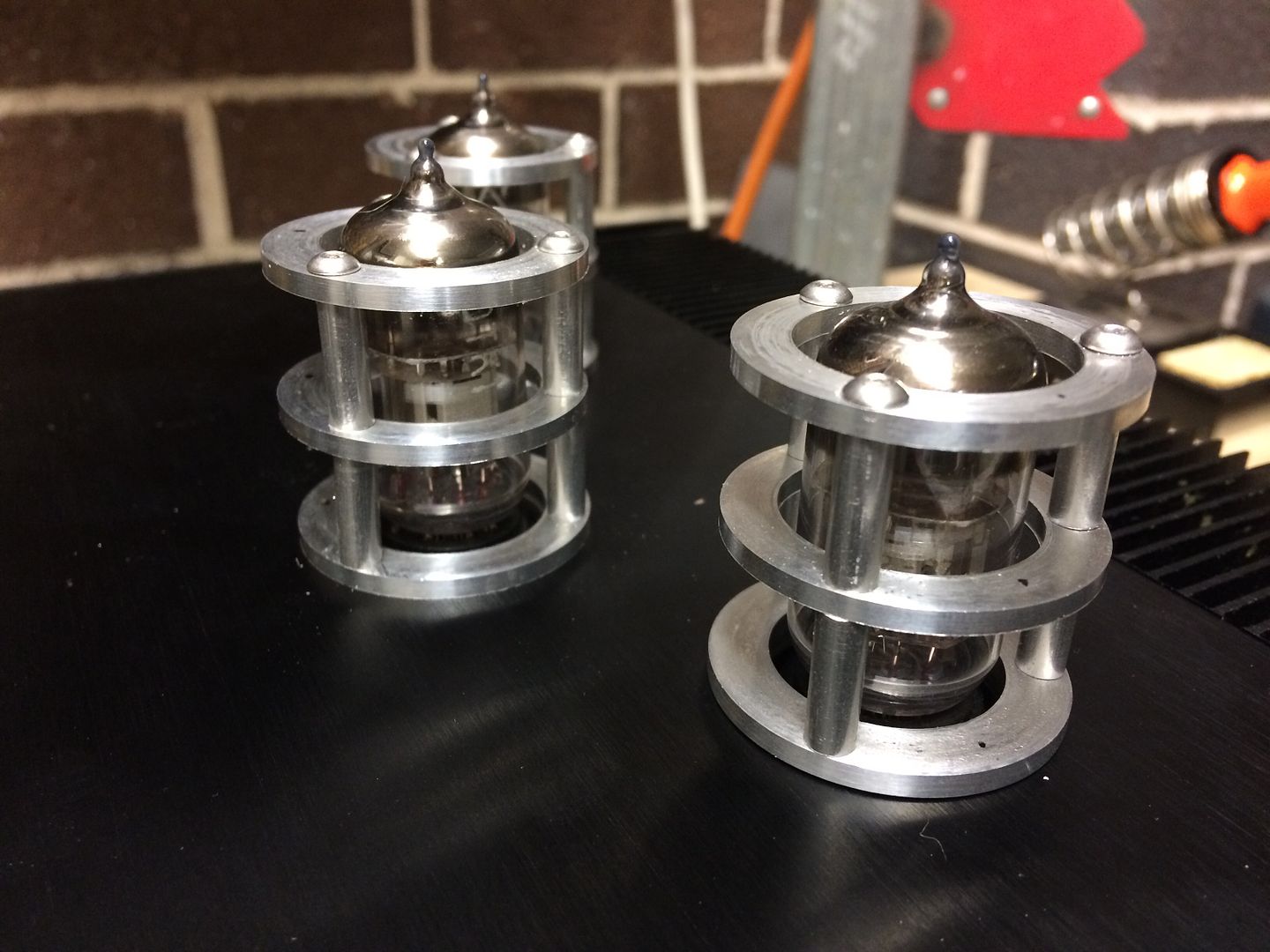neevo
Super Member
My M3 tap came in the mail today so I set to drilling holes in the lid and mounting the tube guards. A bit of a nervous time as I didn't want to bugger it up and whilst a couple were tight, in the end they all buttoned up perfectly. I was planning on polishing the guards but with the industrial look of the amp chassis and seeing them in situ I may leave them a little rough as they currently are.
Of course obligatory photos:


Of course I still need to remove some marker dots.
To say these are solid is an understatement, you can dangle the chassis from them, so they should protect the tubes perfectly, they also give the lid much better proportions.
I also swear they've reduced the hum by about 10% but the noise floor is still not where it needs to be and I'm not 100% sure where the issue is arising from, so I'm going to start again and use the spare PCB I have and start again (as it doesn't have the damaged trace), plus I will be increasing the Alu shielding a bit in the process too, in the hope it will improve things.
Of course obligatory photos:


Of course I still need to remove some marker dots.
To say these are solid is an understatement, you can dangle the chassis from them, so they should protect the tubes perfectly, they also give the lid much better proportions.
I also swear they've reduced the hum by about 10% but the noise floor is still not where it needs to be and I'm not 100% sure where the issue is arising from, so I'm going to start again and use the spare PCB I have and start again (as it doesn't have the damaged trace), plus I will be increasing the Alu shielding a bit in the process too, in the hope it will improve things.
Last edited:


